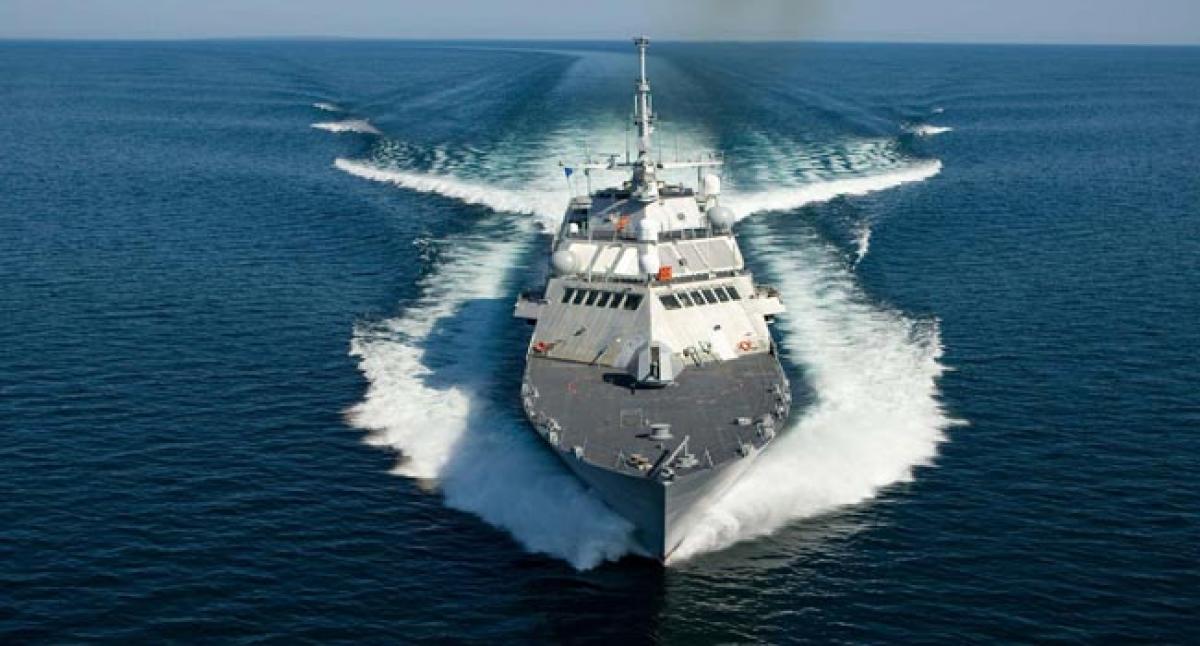Live
- ‘Get Set, Grow Summit 2024’ Focuses on Digital Detox for Families
- Stokes motivates his team to put in extra effort, says England pacer Potts
- From overcoming setbacks to leading India in U19 Women’s Asia Cup, Niki Prasad's amazing journey
- Driving Enterprise Security: Inside Venkata Reddy Thummala’s Leadership Journey
- Constitution debate: PM Modi hails 'Nari Shakti'; makes strong pitch for 'United Bharat’
- Abhijeet Bhardwaj: Revolutionizing Enterprise Analytics with Innovation and Expertise
- Bihar: Inquiry initiated against principal who went to buy veggies during school hours
- Press Sri Lankan Prez for release of Indian fishermen: TN Cong MP to EAM Jaishankar
- TN: DMK postpones executive meet due to heavy rains & Parliament session
- Porous silicon oxide electrodes can fix durability issues in batteries: Researchers
Just In

New Delhi:The Indian Navy has initiated the first steps towards acquiring the Electromagnetic Aircraft Launch System (EMALS) for carriers as well as the long-range Predator B Guardian surveillance drone by sending Letters of Request (LoRs) to the Pentagon under government-to-government deals.
New Delhi:The Indian Navy has initiated the first steps towards acquiring the Electromagnetic Aircraft Launch System (EMALS) for carriers as well as the long-range Predator B Guardian surveillance drone by sending Letters of Request (LoRs) to the Pentagon under government-to-government deals.
According to defence magazine India Strategic (www.indiastrategic.in) the LoRs, requesting price and availability for 22 Guardians and one EMALS, are now under consideration by the US Department of Defense (DOD) for clearance under the Foreign Military Sales (FMS) programme and according to sources in Washington, a positive view is likely to be taken and discussions between the two countries should begin soon. Once the process is through, the US Government (USG) will send its Letters of Acceptance (LOAs).
The Predator B Guardian is a naval version for long-range surveillance over waters while the EMALS is being considered by the Indian Navy for its second indigenous aircraft carrier, INS Vishal, due by 2028. EMALS has been adopted by the US Navy as its next generation aircraft launch system, and again significantly, for its new generation aircraft carriers beginning with CVN 78 USS Gerald R Ford, due for delivery this year.
Vivek Lall, Chief Executive (Global Commercial Strategic Development) for the San Diego-based General Atomics which makes these two systems, declined comment but said: "As far as General Atomics is concerned, we will be opening an office in the Indian capital to assist both the governments as required."
Notably the Guardian is a high performance Intelligence, Surveillance and Reconnaissance (ISR) aircraft and could only be sold to India after it cleared the Missile Technology Control regime (MTCR) regulations.
Powered by a high-performance Honeywell TPE331-10 turboprop engine, it operates from a altitude of 50,000 feet and can fly for 27 hours before returning to its base.
It is equipped with sophisticated day-night sensors, including Raytheon's SeaVue multi-mode maritime radar, to identify and track vessels of different sizes, signals and electronic intelligence systems, satellite communication and even the Traffic Collision Avoidance System (TCAS).
The EMALS uses the propulsion power of electromagnetic energy and its advantage is that it can adapt to launch different sizes of aircraft from a carrier deck with the flick of a switch. Using DC electricity, it is also being devised to launch satellites in the coming years.
The existing generation of steam catapults, developed decades ago, are much slower.
The EMALS system is accompanied by Advanced Arresting Gear (AAG) to assist in secure landing of aircraft.
The Indian Government has acted fast to acquire these assets towards securing the Indian waters against terrorist and hostile intrusions. The LoRs, in fact, were sent by the Indian Navy soon after Prime Minister Narendra Modi's official visit to Washington in June, just as the US also anchored India's entry into MTCR and declared India to be a Major Defense Partner (MDP).
There are no confirmed financial figures for either the drones or the EMALs, but according to industry sources, the list price for the 22 Guardians should be around $2 billion.
Overall though, General Atomics, the biggest privately-held US defence company, could land with big multi-billion dollar deals in the coming years as the Indian Air Force (IAF) has also expressed interest in acquiring more than 100 Predator C Avenger attack drones. IAF had sent a communication in September last year, and significantly during Modi's visit, this requirement was mentioned at the highest levels.
The jet-powered Avenger is a high performance next-generation drone, or Remotely Piloted Aircraft (RPA), for time-sensitive strike missions. It fires missiles to neutralize multiple hostile targets with precision with the flick of a command sent through satellites.
As the procedural paperwork for this drone could also begin only after the MTCR clearance, the Indian Ministry of Defence (MOD) should clear the proposal in due course. (India has just become the 35th Member of NTCR).
Notably, FMS deals require government-to-government (g-to-g) negotiations but with active support from the industry which manufactures every system in the US. The process ensures reasonable pricing, largely in accordance with what the US armed forces would pay for similar systems.
The Defense Security Cooperation Agency (DSCA) of the Department of Defense (DOD) however charges a fee within a band of 2.5 to 5 percent to facilitate the process.
For instance, in the case of Boeing C 17 heavy lift transport aircraft, this was fixed at 3.8 percent. The fee varies for different deals, but will be the same for every country that buys the same system from the US.
By Gulshan Luthra

© 2024 Hyderabad Media House Limited/The Hans India. All rights reserved. Powered by hocalwire.com







